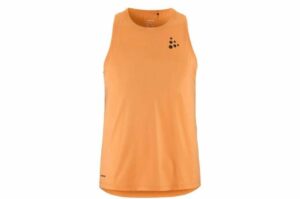The “myth” of massage
A Queen’s University research team has blown open the myth that massage after exercise improves circulation to the muscle and assists in the removal of lactic acid and other waste products. Or maybe not.
A press release about a new Queen’s University study on massage doesn’t mince any words:
A Queen’s University research team has blown open the myth that massage after exercise improves circulation to the muscle and assists in the removal of lactic acid and other waste products.
Thank goodness we’ve finally solved that mystery… right? Well, maybe not. The press release continues:
“This dispels a common belief in the general public about the way in which massage is beneficial,” says Kinesiology and Health Studies professor Michael Tschakovsky. “It also dispels that belief among people in the physical therapy profession. All the physical therapy professionals that I have talked to, when asked what massage does, answer that it improves muscle blood flow and helps get rid of lactic acid. Ours is the first study to challenge this and rigorously test its validity.”
The idea that lactic acid is a problem is one that scientists have been reevaluating in recent years (you can read about the change in this Gina Kolata article from the New York Times). It is true that many massage advocates will still claim that this is why massage helps — but the idea has already been debunked. Here’s what I wrote in a Jockology column on massage research back in December:
For many years, muscle soreness after workouts was thought to result from an accumulation of lactic acid in the muscles, and massage was believed to help flush the acid out. The lactic acid theory is now largely discredited, and muscle soreness is instead thought to result from microscopic tears in muscle fibres – and, crucially, new tears continue to appear for several days after a bout of exercise, possibly due to inflammation of the affected area.
To investigate the role of massage, the Ohio State researchers exercised sedated rabbits by triggering a nerve impulse causing contractions of a leg muscle. They then used a machine to deliver “cyclic compression forces” simulating 30 minutes of Swedish massage (the most common type of sports massage) daily. The results were clear: massaged muscles regained 59 percent of their lost strength after four days, whereas rested muscles regained only 14 percent.
The massaged muscles also had fewer damaged fibres, and almost none of the white blood cells associated with muscle damage – and they weighed less, suggesting that massage had indeed helped prevent swelling. Interestingly, the results were much less pronounced if the first massage was delayed for a day after exercise, suggesting that the sooner you get your massage, the better.
I’ll be very interested to see the Queen’s research (so far I’ve just seen the press release, not the actual study). If they really show that massage hinders rather than helps blood flow to the affected muscles, that’s an interesting result — but it’s only part of the story. Let’s not get carried away announcing the death of massage quite yet.

